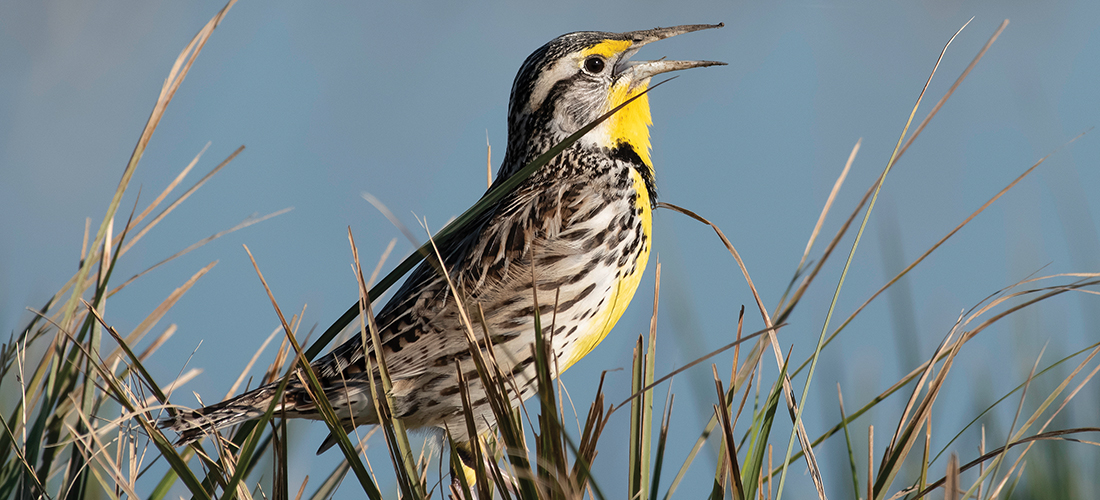
Hidden in Plain Sight
The secretive and elusive Eastern meadowlark
By Susan Campbell
Larks? Here in central North Carolina? Yes, indeed! But few folks are likely to notice them. Even during the summer, when their melodious songs can be heard on the warmest days and their yellow plumage is at its brightest, these birds tend to blend in with the large fields they inhabit.
Meadowlarks are not small birds, but they do have secretive habits that allow for survival in open areas. They are only found breeding in agricultural areas with plenty of large insects such as grasshoppers and beetles, as well as warm season grasses that produce a good crop of seeds by midsummer. The Eastern meadowlark is a jay-sized bird with long legs that spends the majority of the time on the ground searching for prey. The head, back and tail are streaked and blend in perfectly with the vegetation. Its chest, however, is yellow with a black “V-shaped” collar. Males actually display a somewhat brighter breast at prospective females and will even jump into the air as they puff out their chests in their attempts to impress potential mates.
Where the habitat is good, males will defend territories containing more than one female. Polygyny is not uncommon for meadowlarks. This is more frequently the case for Western meadowlarks, found in the Great Plains and beyond. Actually, Eastern and Western meadowlarks are almost indistinguishable where they overlap in the Midwest and southern Plains. Their voice is really the only clue. Westerns are far more musical, having a song that is a rich warble. Not surprisingly, in the western part of the range, Easterns do sometimes learn the wrong song or even hybridize with their Western cousins.
Here you can find meadowlarks anywhere from larger hay fields to horse farms or airports. Males will be singing from elevated perches, such as fence posts, from dawn until sunset. They typically throw their heads back and emit a series of loud, clear whistles. In winter, you will more commonly hear their rattling call as a dozen or more individuals make their way through plowed fields in search of leftover corn, soybeans or slow-moving insects. Unfortunately, because they require very large openings, they are reluctant to come to bird feeders even in the coldest weather.
Females build a cup-shaped nest in a thick clump of grass in order to hide and protect their young from both aerial and ground predators. And, in our area, the season is long enough for two broods to be produced. However, the fact that they typically use large hay fields makes them very vulnerable to losing eggs and nestlings to mowing. The increase in ground predators such as raccoons, foxes and stray cats also has caused significant population declines here in the eastern United States. There are other grassland species that have been affected as well. Grasshopper sparrows, horned larks and bobolinks have become even more scarce — but their stories will have to wait. PS
Susan would love to receive your wildlife sightings and photos. She can be contacted at susan@ncaves.com.





